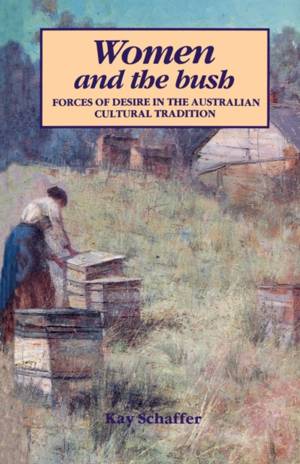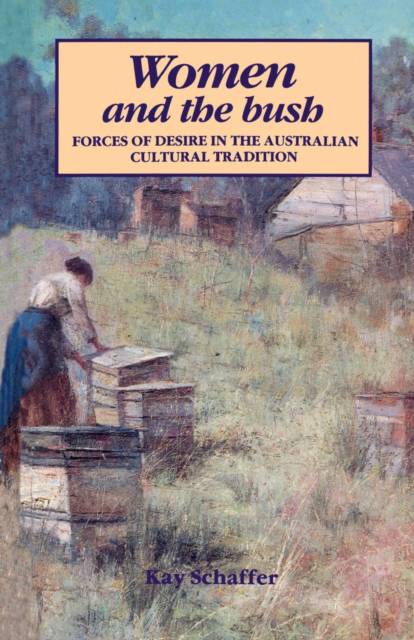
- Afhalen na 1 uur in een winkel met voorraad
- Gratis thuislevering in België vanaf € 30
- Ruim aanbod met 7 miljoen producten
- Afhalen na 1 uur in een winkel met voorraad
- Gratis thuislevering in België vanaf € 30
- Ruim aanbod met 7 miljoen producten
Zoeken
Women and the Bush
Forces of Desire in the Australian Cultural Tradition
Kay Schaffer
Paperback | Engels
€ 64,95
+ 129 punten
Uitvoering
Omschrijving
Images of Australian identity, and of Australian nationhood, are social and cultural constructs. There are several dominant themes and elements, one of the most pervasive being the Australian bushman confronting a vast and barren landscape. This is a specifically Australian conception of the battle between Man and Nature. Throughout the myths, traditions and literary creations of Australia are underlying assumptions about gender and sexual difference: assumptions about masculinity and femininity within the nationalist tradition, which affect perceptions today. In this new critique, Kay Schaffer applies the insights of feminist scholarship and of literary analysis to examine the national character. She looks at how the concept of 'the typical Australian', and the woman who stands in relation to him, has evolved across a range of cultural forms, including historical and literary texts, film and the media. She concentrates in particular on the writings of Henry Lawson and of Barbara Bayton. The circulation of ideas about these writers, their contribution to a national mythology, and the different ways their importance has been represented to modern readers, is explored and discussed. This thoughtful and provocative study will interest readers concerned with Australian literary and cultural history, as well as the broader questions of Australia's changing self-image. It will be of particular value to those interested in feminist approaches to culture and society.
Specificaties
Betrokkenen
- Auteur(s):
- Uitgeverij:
Inhoud
- Aantal bladzijden:
- 248
- Taal:
- Engels
Eigenschappen
- Productcode (EAN):
- 9780521368162
- Verschijningsdatum:
- 29/03/1991
- Uitvoering:
- Paperback
- Formaat:
- Trade paperback (VS)
- Afmetingen:
- 140 mm x 216 mm
- Gewicht:
- 344 g

Alleen bij Standaard Boekhandel
+ 129 punten op je klantenkaart van Standaard Boekhandel
Beoordelingen
We publiceren alleen reviews die voldoen aan de voorwaarden voor reviews. Bekijk onze voorwaarden voor reviews.











